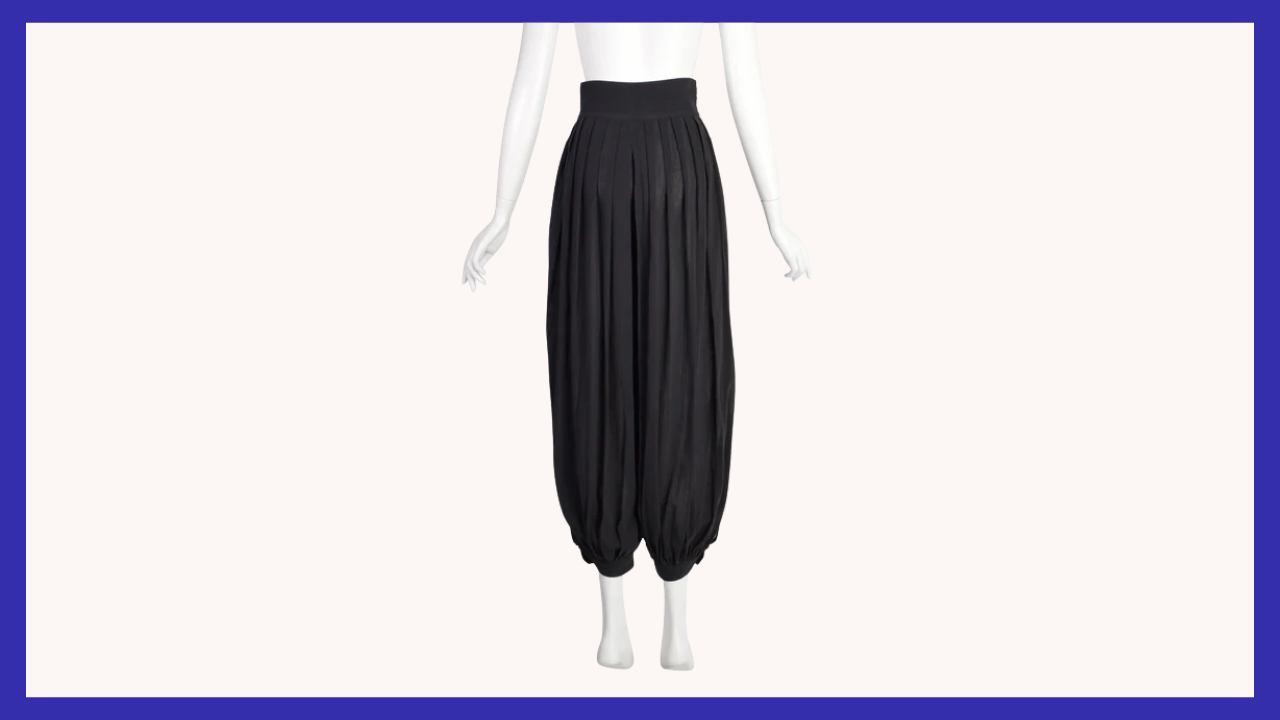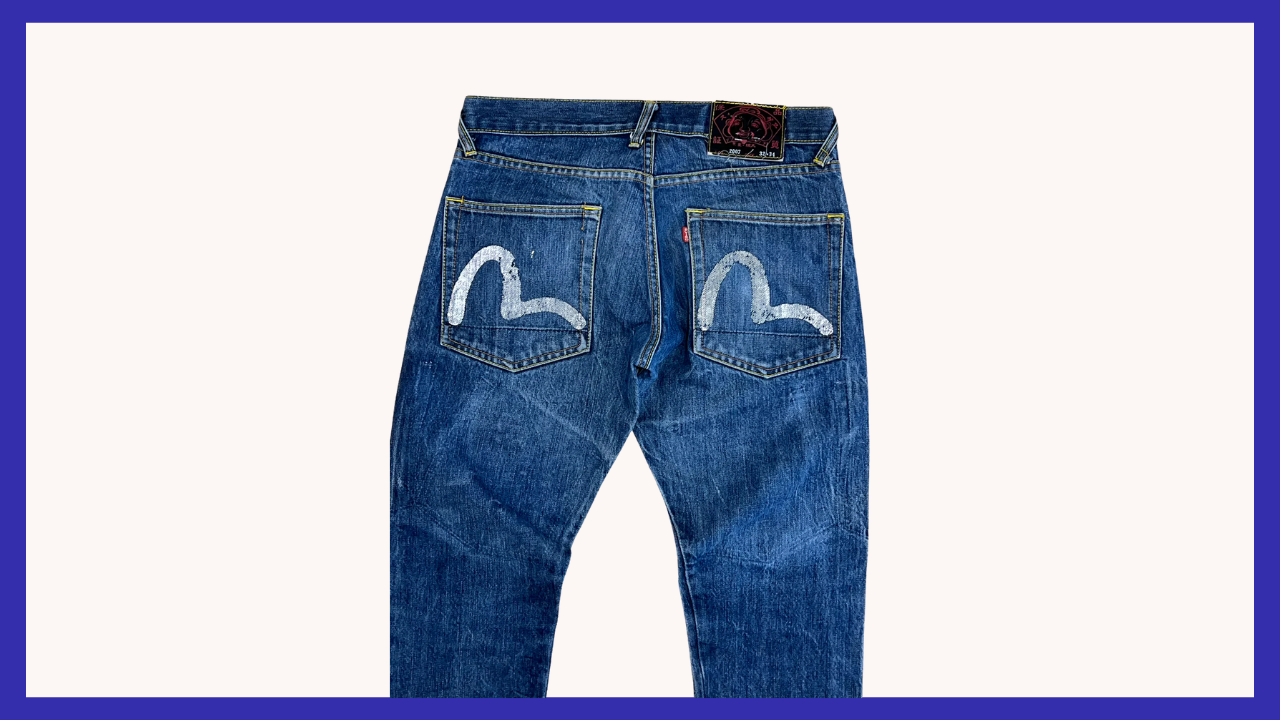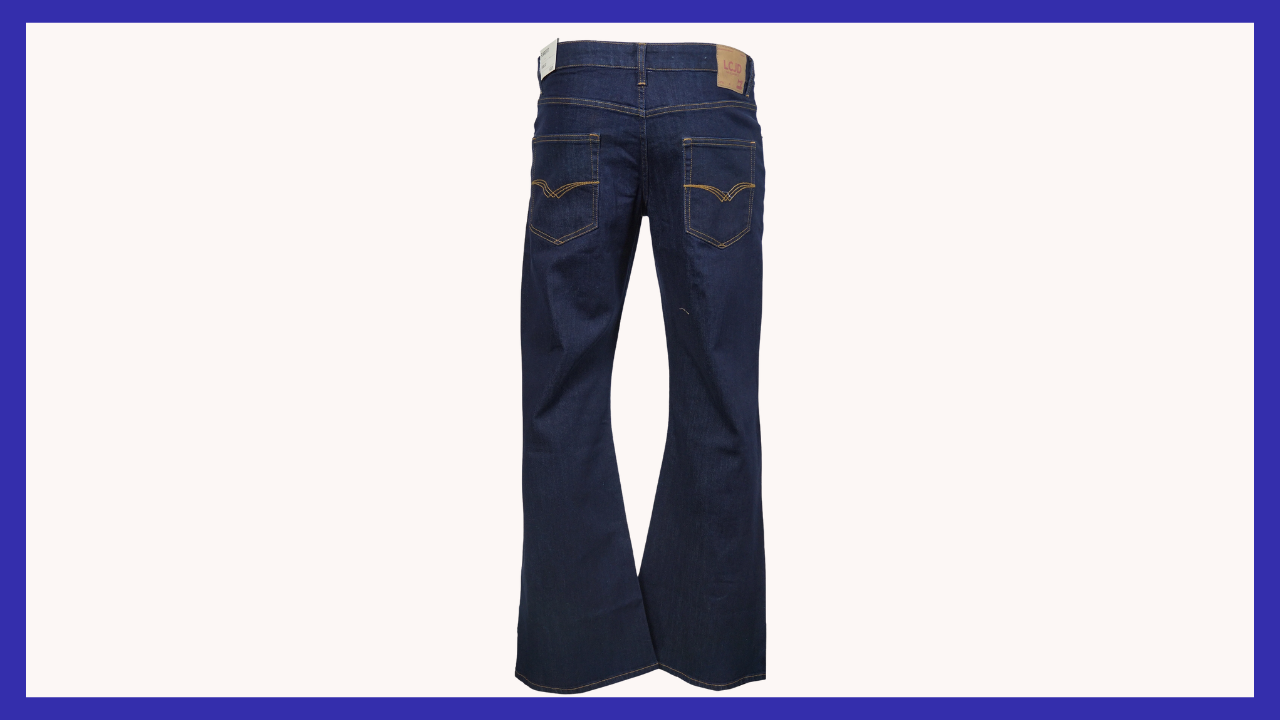AllVintageStyles
The Ultimate Vintage Fashion Encyclopedia
Harem Pants

Loose-fitting pants gathered at the ankles, adapted from Middle Eastern traditional garments into 1970s bohemian fashion celebrating cultural diversity and comfort.
Quick Facts
- Era: 1970s (peak popularity 1970s-1980s)
- Origin: Middle East/Asia (traditional dress, 1970s Western bohemian adoption)
- Garment Type: Bohemian pants with ethnic cultural influences
- Key Identifiers: Drop crotch, loose legs, gathered ankles, flowing silhouette
- Typical Resale Price: $35-$220 (authentic vintage pieces)
- Best For: Bohemian fashion collectors, ethnic style enthusiasts, comfort wear seekers
History & Evolution
Harem pants originated from traditional Middle Eastern and South Asian clothing worn in royal courts and private quarters, featuring loose construction that provided modesty, comfort, and freedom of movement in hot climates. Traditional versions served practical and cultural purposes within specific social contexts, representing authentic garments with deep cultural significance and regional variations. The flowing silhouette and gathered ankle construction reflected centuries of textile traditions and cultural dress codes.
The 1960s and 1970s counterculture movement introduced harem pants to Western fashion when bohemian communities embraced ethnic clothing as symbols of cultural awareness and rejection of conventional dress codes. The style became associated with international travel, artistic expression, and alternative lifestyle choices, appealing to young people seeking authentic alternatives to mainstream Western fashion. Fashion magazines promoted exotic styling as sophisticated bohemian chic that emphasized global cultural appreciation.
The 1970s established harem pants as essential bohemian and casual wear while maintaining connections to authentic ethnic heritage and cultural respect. The style influenced loose-fitting trouser design throughout subsequent decades, representing appreciation for cultural diversity and comfortable elegance. Contemporary fashion periodically revives harem elements, but vintage pieces offer superior natural fabric quality and authentic construction that reflects original cultural traditions and 1970s bohemian movement values.
Authentication Tips
Authentic 1970s-1980s Features:
- Natural fiber construction including cotton, silk, or rayon with proper drape and cultural authenticity
- Traditional construction techniques with gathered ankles and authentic drop crotch proportions
- Hand-finished details or quality ethnic construction methods reflecting cultural craftsmanship
- Period-appropriate patterns including paisley, ethnic prints, or traditional designs with cultural significance
- Import labels indicating authentic ethnic sourcing or bohemian fashion manufacturing
Common Reproductions/Modern Pieces:
- Synthetic fabrics or polyester blends lacking authentic ethnic textile characteristics
- Simplified construction without proper gathering techniques or authentic proportional relationships
- Generic patterns without cultural significance or accurate traditional design elements
- Contemporary color palettes or prints not available during vintage bohemian fashion periods
- Mass-production labels without connection to authentic ethnic textile traditions or bohemian heritage
Styling & Use Cases
- Best for bohemian enthusiasts: Pair with flowing tops and ethnic jewelry for authentic 1970s international fashion styling
- Ideal for cultural appreciation: Combine with natural accessories and handcraft elements for respectful traditional fashion presentation
- Perfect for comfort seekers: Layer with contemporary pieces for relaxed, flowing silhouettes that honor cultural origins
Modern styling tips:
- Approach styling with cultural sensitivity and respect for traditional garment significance
- Choose accessories that honor rather than appropriate ethnic cultural elements
- Focus on natural materials and flowing proportions that complement the pants' comfortable heritage
FAQ
Q: How can I tell if harem pants are authentic vintage construction?
A: Check for natural fiber construction with proper cultural drape, traditional construction with authentic gathered ankles, hand-finished details reflecting ethnic craftsmanship, period-appropriate patterns with cultural significance, and import labels indicating authentic ethnic sourcing.
Q: What's the typical price range for vintage harem pants?
A: Authentic vintage harem pants range from $35-220 depending on fabric quality, cultural authenticity, and condition. Hand-embroidered pieces or documented ethnic examples command higher prices among bohemian fashion and cultural textile collectors.
Q: How should I care for a vintage harem pants?
A: Hand wash natural fabrics in cold water to preserve cultural construction, machine wash cotton pieces on gentle cycle, air dry to prevent shrinkage and maintain flowing proportions, and store carefully to protect any hand-finished ethnic details.
Q: What makes vintage harem pants valuable to collectors?
A: Authentic ethnic heritage representing traditional Middle Eastern and South Asian clothing traditions, superior natural fiber quality reflecting cultural textile craftsmanship, cultural significance in 1970s bohemian fashion and international style movements, and documentation of cross-cultural fashion exchange during counterculture era that celebrated global diversity through clothing choices.
📷: Amarcord Vintage Fashion



